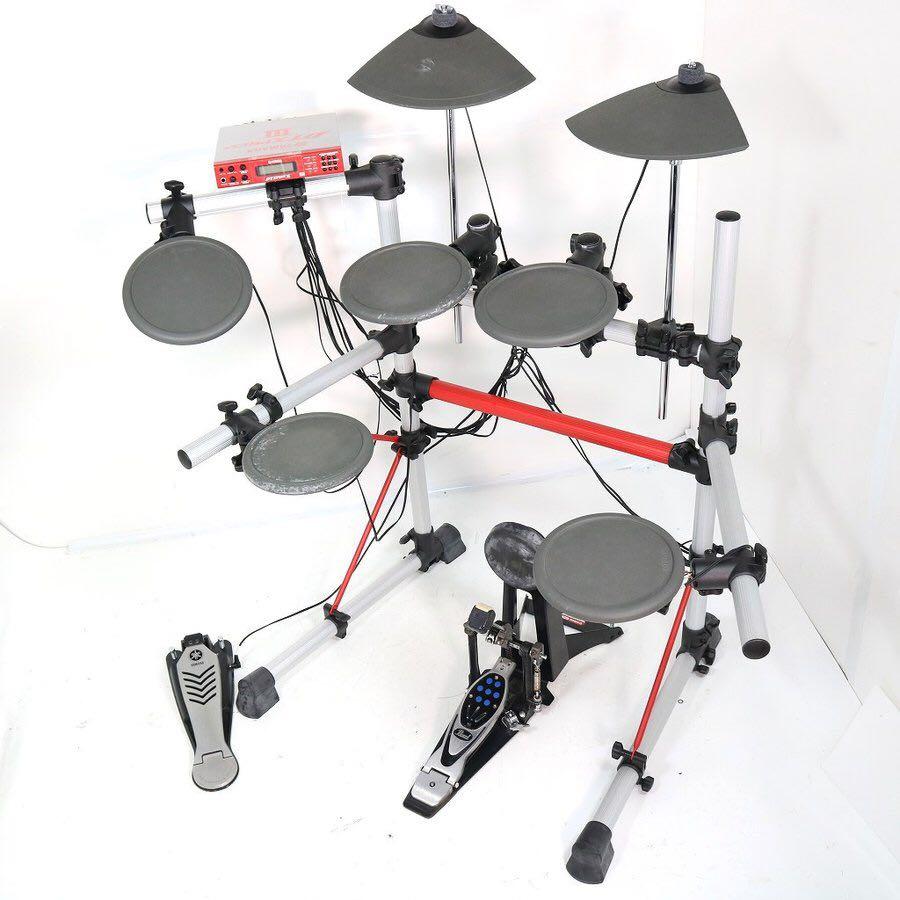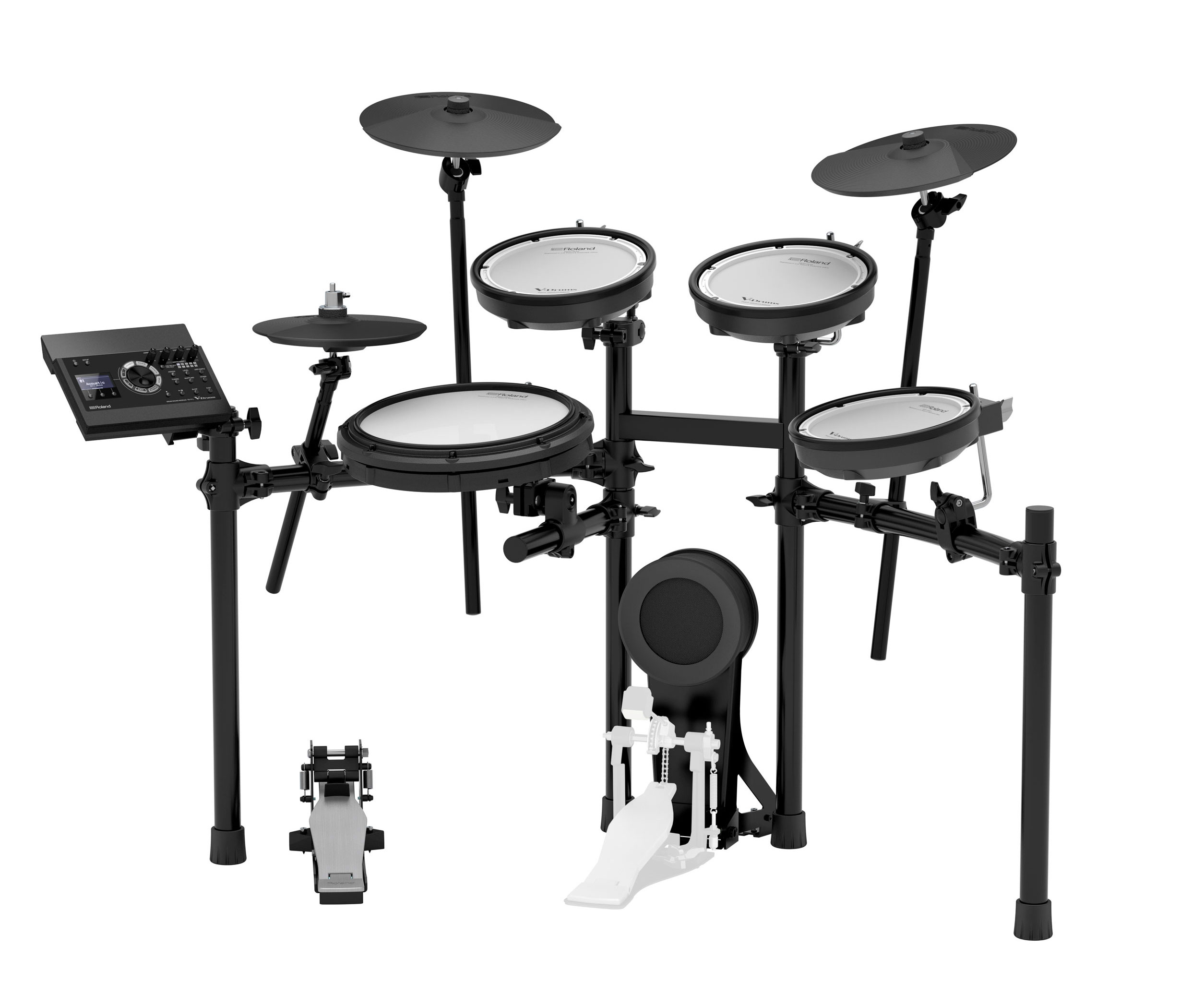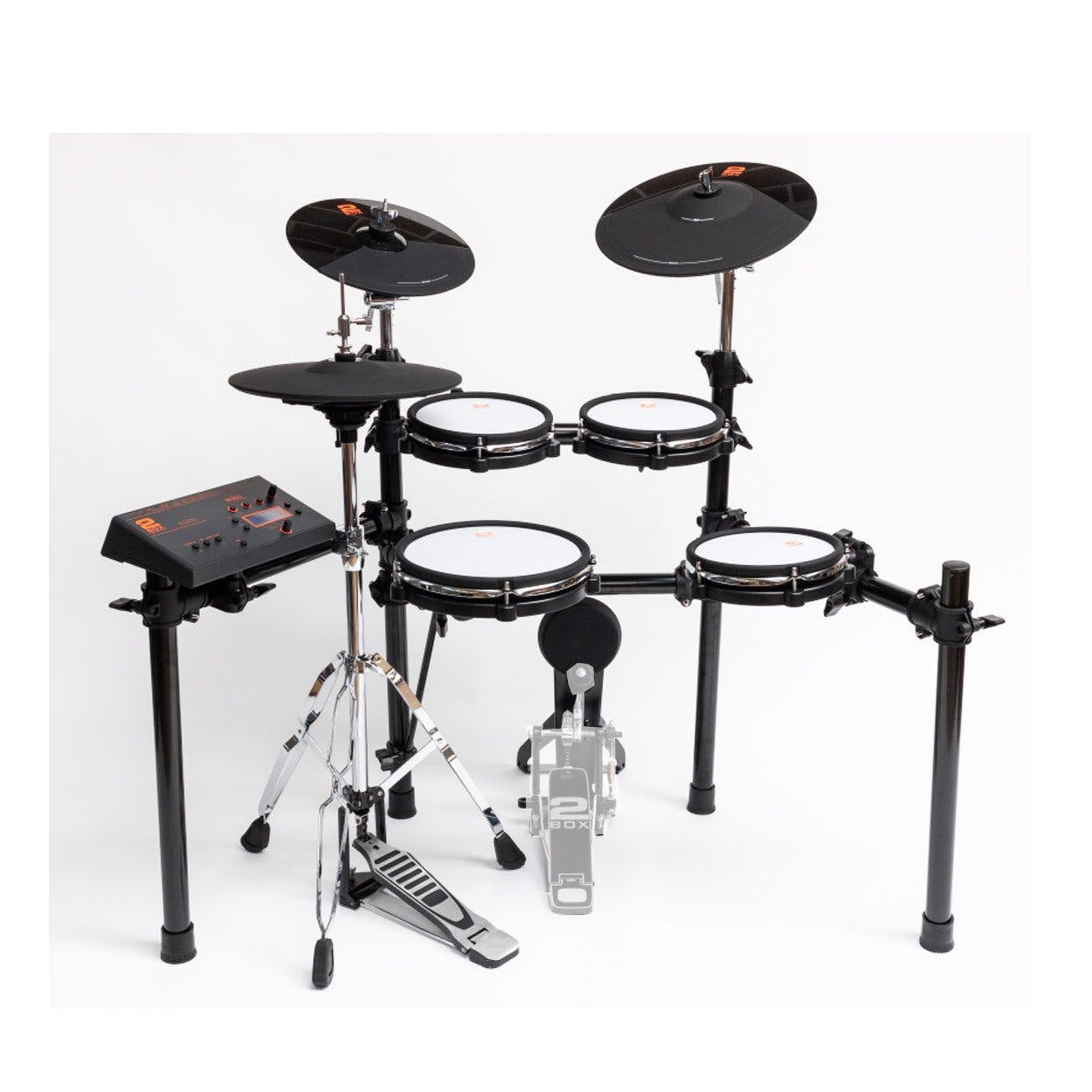Building an electronic drum kit
This post looks at options for building up an electronic drum kit - or “e-drums” - on a relatively modest budget. I love playing acoustic drums but there’s no getting away from the noise they make, and my budget Mapex V-series is hard to get a good sound from.
Electronic kits offer an appealing solution - low volume practice with the ability to change and customise sounds - and they are becoming more affordable. Used kits and parts from the big manufacturers (Roland, Yamaha, ATV, Alesis…) are readily available but mixing parts from different brands can cause problems - more on this later.
On the rebound
I owned a basic Yamaha kit like the one below in the late 1990s but it got little use. The small rubber pads were horrible and tiring to play with hardly any rebound like an acoustic drum. The cymbal pads were equally bad with no natural swing and inconsistent triggering.

Another fine mesh
Technology has moved on leaps and bounds in the last 15-20 years. Arguably Roland kick-started much of this innovation with the V-Drum series including advanced drum modules, mesh-head drum pads and more realistic hi-hats and cymbals.
These features have trickled down to complete entry-level kits like the Roland TD-07KV shown below. This was launched in 2020 and at time of writing it retails for a reasonably wallet-friendly 850 GBP.

In the meantime, professional music production is now possible on budget computing hardware using Digital Audio Workstation (DAW) software. Virtual instruments and plug-ins provide an unimaginable variety of high quality sounds and can replace a dedicated drum module - more on this later.
Hey good looking
Another trend in the e-drum market is the shift towards kits that look more like their acoustic cousins - full size kick drums, larger pads and realistically sized cymbals. This is more about look & feel rather than pure cosmetics - larger pads and cymbals can provide a playing experience that is closer to an acoustic kit.
This trend actually started a while ago and was led by small specialist e-drum manufacturers like Jobeky. Both Roland and ATV have launched e-drum kits styled after acoustic drums - for example this Artist Series from ATV:

Bang on
Initially I looked at buying a used kit from Roland such as the TD-11KV or its follow-up, the TD-15KV. Since Roland gear has a reputation for solid build quality and reliability used prices are strong with complete kits going for 1,000 GBP or even more. This was way too much for a cash purchase, so I began looking at new kits with the attraction of zero-interest deals.
Roland’s TD-17KVX is popular and comes with a reasonable 12-inch pad for the snare, but the tom pads are tiny and the whole thing is mounted on a small stand. The TD-17 drum module is well regarded but lacks expandability with just one auxiliary pad input. With a retail price around 1599 GBP this was also stretching the budget.

I chose not to buy the Roland kit for the following reasons:
- Small pads, except for the snare pad
- Limited expandability of the module
- Overly synthetic sound (to my ears)
- “Locked in” to Roland products
- Expensive for what it is
Next on my list were the Drumit modules from 2Box. These are traditional drum modules with separate inputs for each pad instead of a proprietary “cable snake” connector. Unlike other modules they support different types of pad from different manufacturers. This is very appealing if you want to build up a kit using whatever budget parts you can find. 2Box also bundle the Drumit modules with the basic Speedlight kit starting at around 1049 GBP.

I ruled out the 2Box option for the following reasons:
- Small pads and general budget look of the Speedlight kit
- Complex drum module UI
- Module has a USB Host port but it doesn’t support MIDI or Audio over USB
- Drumit 3 module on its own is expensive at 650 GBP
This left me scratching my head and wondering if I needed a drum module at all.
Was there a way to connect mesh pads and cymbals directly to a computer? Could I use this to trigger sounds in Superior Drummer 3 or an equivalent?
The answers are “yes” and “yes” and you can find out more in the next article.